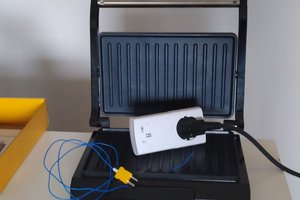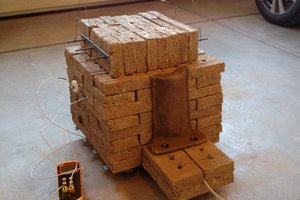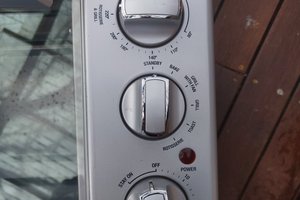The 3$ fluid warmer
Problem
Medical institutions often need accurate fluid warmers for a variety of tasks. Specialised warmers can easily be found in established hospitals with bloated budgets. What about small dispensaries or for that matter temporary camps set up at disaster sites? They are always reeling under a funds crises and cannot afford a sophisticated fluid warmer.
This is the insipiration for this project. My point is that why should a device as simple as a fluid warmer, something man has found ways to do since the dawn of civilisation, be so heavily priced. Wish me luck as I embark on the journey to build a 3$ fluid warmer
Solution
My design would consist of three main components -
- A heating mechanism to heat the fluid
- A temperature sensing mechanism
- An indication mechanism to indicate - Final temperature reached
The idea is to make a heater that can be "clipped on" to any calibrated utensil, beaker, measuring flask etc. containing fluid. A heating rod and a temperature sensor would be immersed in the fluid and the temperature logged over time. Another sensor would also keep track of surrounding temperature. Using the sensor values, the heating would be configured and the remaining time to achieve final temperature would be calculated. An ESP-01 chip mounted on the handle would process the data and send the logged values as well as the time remaining to a web application that in turn sends notifications to the user.
This creates an IoT based end to end solution of this simple problem. If a disaster struck area does not have electricity supply, the heating can be carried out by a previously charged battery. Also, if a smartphone is not available, the indication can simply be replaced by a buzzer and LED mechanism that signals attaining of final temperature.
The Build
(27/05/2020): To make the heating element I did not have access to a commercial water heater that I could get for around 1.5$ as the lockdown in my city hasn`t been lifted. Necessity is the mother of invention. To make the heating mechanism, I followed a popular technique used to make DIY soldering irons. I salvaged a bolt from my father`s 'antiquities' in the garage. I wrapped nichrome wire around it after putting an insulation layer in between. I connected the free ends of the wire through a relay to the mains.
For the controller board I used a Wemos D1 mini board for demonstration purposes(I intend to use the bare chip and program it via FTDI). I had some thermistors from a previous automotive project. One I soldered to long strands of wire and the other, I attached in place with super glue to a wooden handle on which I also glued the relay and the heating mechanism.
I wrote a simple analogread code onto the Wemos board and observed the values on the terminal for consistency. To verify, I used a clinical thermometer. It worked like a charm after the multiplying factor was adjusted after two rounds of testing.
In the meantime, I burned the nichrome wire a few times. I added a fuse to be sure.
I tested the time calculating algorithm based on high school formulae(Newton`s law of cooling - the approximate formula). I got offsets on using the approximate formula. So, I had to use the complicated form of the formula. Now, it worked quite well. It heated up a 200ml water cup from 26 degrees to 42 in just two minutes.
All in all, I am satisfied with my build uptill now. Next step is to add cloud connectivity and an indication mechanism.
(03/06/2020): Got busy with exams at my uni. I added a buzzer operated by the ESP board and a red LED to be sure. I already had a datalogging setup of an app connected with NodeRed and AWS. I used the same to test the operation of the setup and thankfully it worked in the first attempt.
And there you have it, an open-source fluid warmer under 3$.
If u have any suggestions regarding how I can improve my build, please do let me know in the comments.


 helge
helge
 kdstanhope
kdstanhope
 Matt Moses
Matt Moses
Can you please present a BOM?